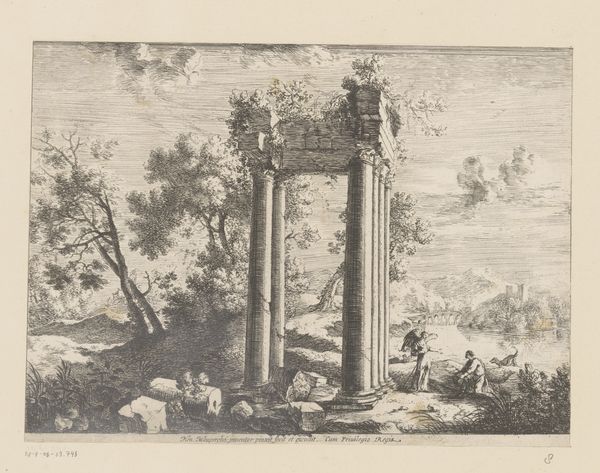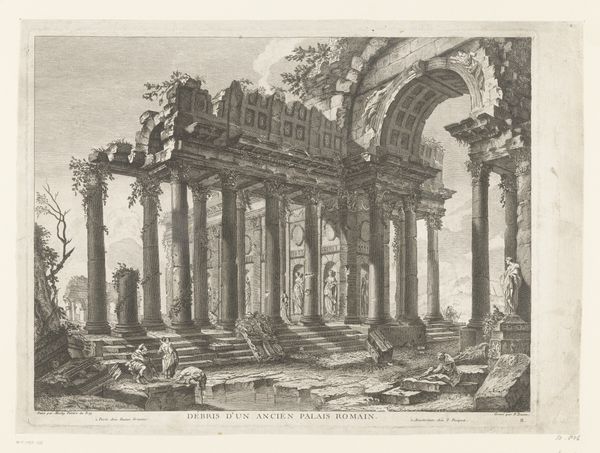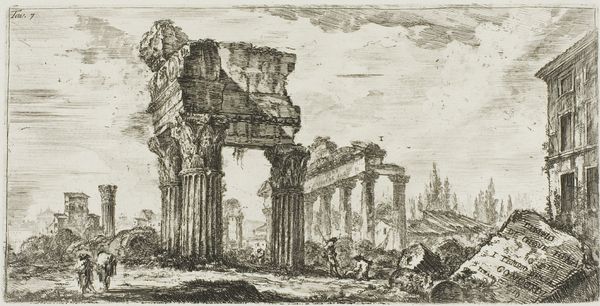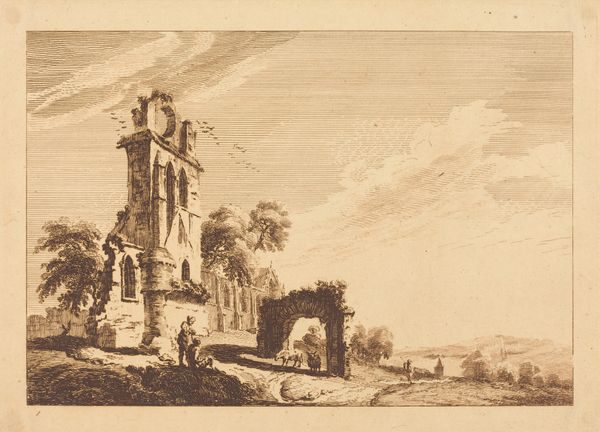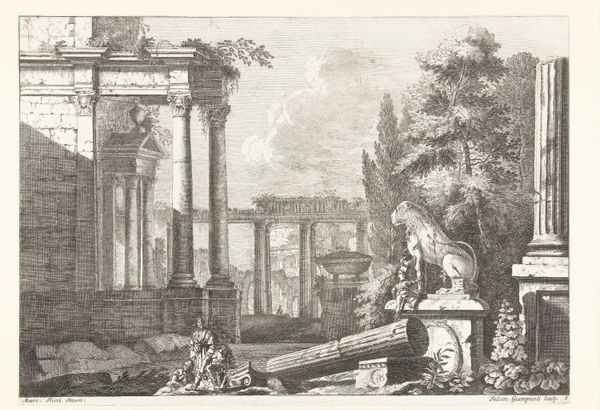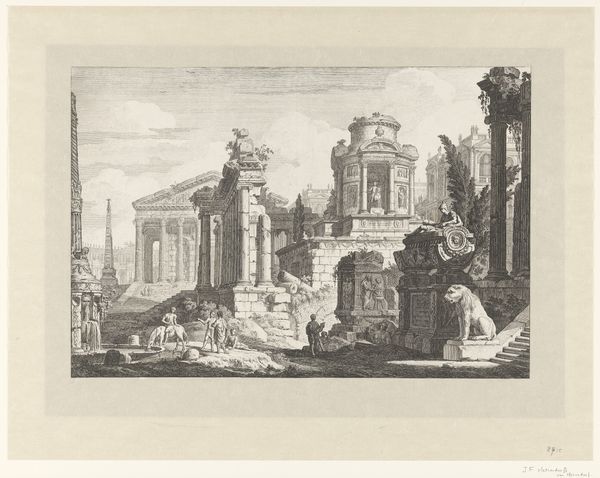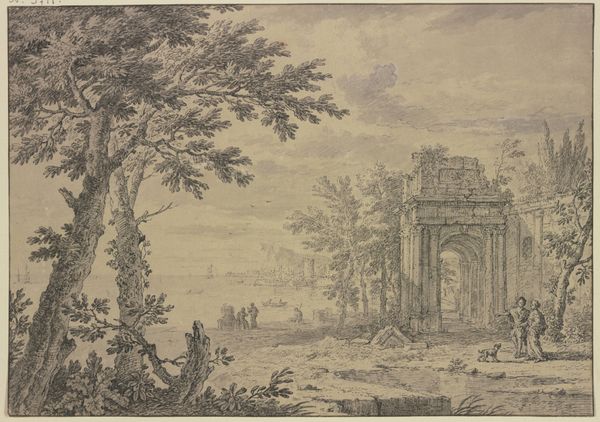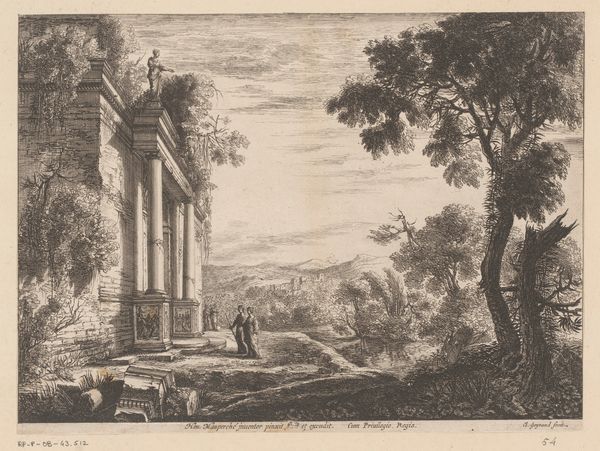
drawing, print, etching, paper
#
drawing
# print
#
etching
#
landscape
#
classical-realism
#
etching
#
paper
#
cityscape
#
history-painting
#
italian-renaissance
#
italy
Dimensions: 184 × 254 mm (plate); 226 × 296 mm (sheet)
Copyright: Public Domain
Editor: So, this is Bernardo Bellotto's "Landscape with Ruins," an etching from around 1740, currently at the Art Institute of Chicago. It has this incredible feeling of decay and the fragility of civilization, I guess. How do you interpret this work? Curator: That's a powerful initial reading. Bellotto, like many artists of his time, was deeply engaged with the past, particularly the weight of classical history on the present. Consider the "ruins" motif not just as a depiction of decay, but as a meditation on power dynamics. Who builds, who destroys, and who inherits the remnants? Editor: I see. So the ruins aren't just about things falling apart, but more about the layers of history. Is there also a critique of colonialism, perhaps, implied in showcasing these dilapidated architectural structures? Curator: Precisely. Think about the Grand Tour, where wealthy Europeans, particularly the British, traveled to Italy to collect antiquities, often displacing and recontextualizing them. Bellotto, as a Venetian artist, might be subtly commenting on this act of cultural appropriation and the way history gets repackaged and commodified for Western audiences. Notice how small the figures are compared to the architecture. Who do these imposing ruins serve in this landscape? Who holds power? Editor: That is fascinating, the relationship between the landscape and the people within. Also the kind of bare tree, not lush. The whole scene suggests resilience, but perhaps forced upon some by others. I never would have considered all of that! Curator: Absolutely! Art like this isn't just about aesthetic beauty; it's about unpacking the social, economic, and political currents that shape our understanding of the world and our relationship to the past. Editor: I will never look at another landscape quite the same way again. Thanks! Curator: It was my pleasure. Exploring art through an intersectional lens truly opens up new avenues of interpretation.
Comments
No comments
Be the first to comment and join the conversation on the ultimate creative platform.


